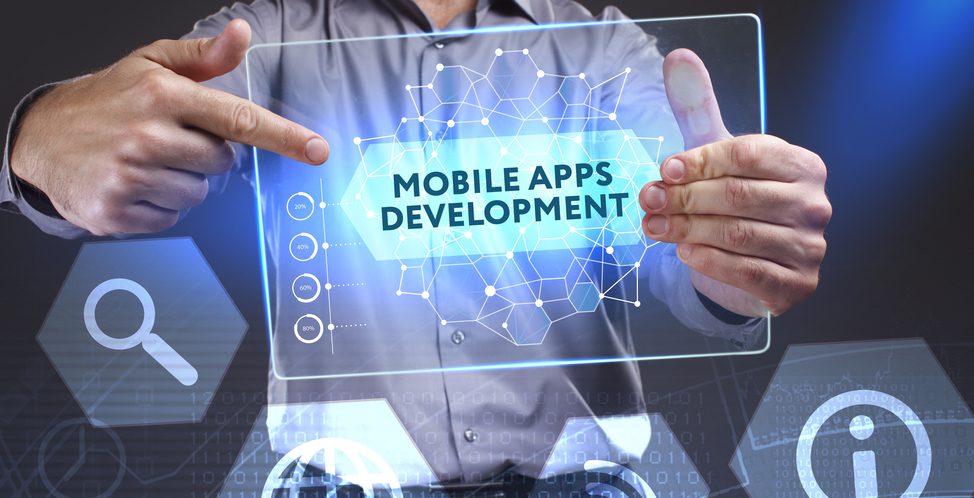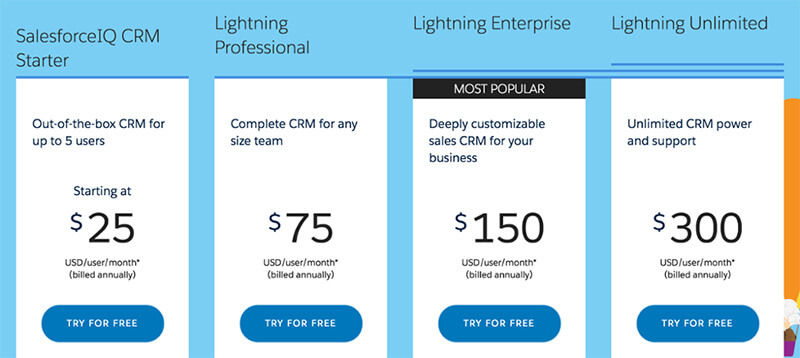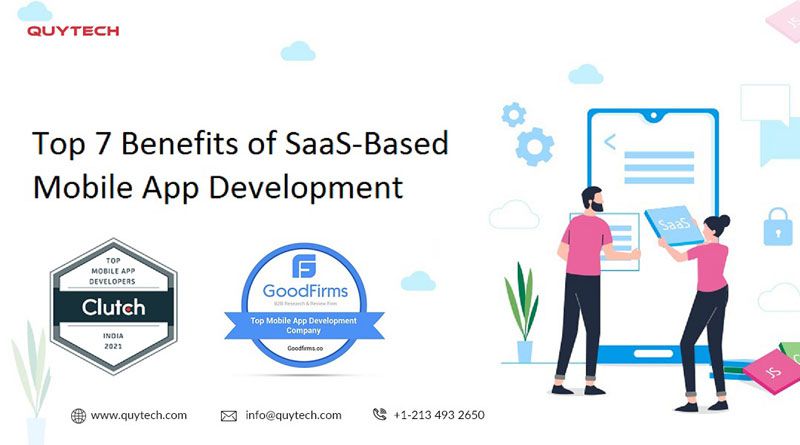Unlocking the Potential of Mobile Apps for SaaS Startups
The rise of mobile devices has transformed the way businesses operate, and SaaS startups are no exception. Mobile apps have become an essential tool for SaaS startups to reach their target audience, increase customer engagement, and drive revenue growth. In fact, a study by Gartner found that by 2023, mobile apps will be the primary channel for customer engagement, surpassing traditional websites and desktop applications.
So, what makes mobile apps so crucial for SaaS startups? For one, mobile apps provide a seamless and personalized user experience, allowing customers to access SaaS services on-the-go. This, in turn, leads to increased customer satisfaction, loyalty, and retention. Moreover, mobile apps enable SaaS startups to collect valuable user data, which can be used to inform product development, marketing strategies, and customer support.
Another significant advantage of mobile apps for SaaS startups is the ability to expand their market reach. With a mobile app, SaaS startups can tap into new markets, including emerging economies and regions with limited access to desktop computers. This can be particularly beneficial for SaaS startups that offer services in industries such as healthcare, finance, and education, where mobile access is critical.
Furthermore, mobile apps can help SaaS startups to stay competitive in a crowded market. By offering a mobile app, SaaS startups can differentiate themselves from competitors and establish a strong brand presence. This can be especially important for SaaS startups that operate in industries with high customer acquisition costs, where every advantage counts.
In terms of SaaS startup mobile app development, there are several key considerations to keep in mind. First and foremost, SaaS startups must ensure that their mobile app is user-friendly, intuitive, and provides a seamless user experience. This requires careful attention to user interface (UI) and user experience (UX) design, as well as rigorous testing and quality assurance.
Additionally, SaaS startups must consider the technical requirements of their mobile app, including scalability, security, and integration with existing systems. This may involve working with experienced mobile app developers, investing in robust infrastructure, and implementing robust security measures to protect user data.
By prioritizing mobile app development, SaaS startups can unlock new opportunities for growth, innovation, and customer engagement. Whether you’re a seasoned entrepreneur or just starting out, investing in a mobile app can be a game-changer for your SaaS startup. In the next section, we’ll explore the different mobile app development strategies available to SaaS startups, including native, hybrid, and cross-platform development.
How to Choose the Right Mobile App Development Strategy for Your SaaS Startup
When it comes to SaaS startup mobile app development, choosing the right development strategy is crucial for success. With so many options available, it can be overwhelming to decide which approach to take. In this section, we’ll explore the different mobile app development strategies available to SaaS startups, including native, hybrid, and cross-platform development.
Native app development involves building a mobile app from scratch for a specific platform, such as iOS or Android. This approach provides the best user experience and performance, but can be time-consuming and expensive. Native apps are ideal for SaaS startups that require complex functionality, high-performance graphics, or direct access to device hardware.
Hybrid app development, on the other hand, involves building a mobile app using web technologies such as HTML, CSS, and JavaScript. Hybrid apps are then wrapped in a native container, allowing them to access device hardware and native APIs. This approach is faster and more cost-effective than native development, but may compromise on performance and user experience.
Cross-platform app development involves building a mobile app using a single codebase that can run on multiple platforms, including iOS, Android, and Windows. This approach is ideal for SaaS startups that require a rapid time-to-market and a consistent user experience across multiple platforms. Cross-platform development frameworks such as React Native and Flutter have made it easier to build high-quality apps that run on multiple platforms.
So, how do you choose the right mobile app development strategy for your SaaS startup? Here are some tips to consider:
First, define your project requirements and goals. What features do you need to include in your mobile app? What is your target audience and what devices do they use? What is your budget and timeline for development?
Second, assess your development team’s skills and expertise. Do you have experience with native, hybrid, or cross-platform development? What tools and technologies do you have at your disposal?
Third, consider the trade-offs between development time, cost, and performance. Native apps may provide the best user experience, but may take longer and cost more to develop. Hybrid and cross-platform apps may be faster and more cost-effective, but may compromise on performance and user experience.
Finally, evaluate the long-term maintenance and update requirements for your mobile app. Will you need to update your app frequently to keep up with changing user expectations and device hardware? Will you need to support multiple platforms and devices?
By considering these factors and choosing the right mobile app development strategy, SaaS startups can build high-quality mobile apps that meet their business needs and provide a great user experience. In the next section, we’ll explore the key features that SaaS mobile apps should include, including user authentication, data synchronization, and push notifications.
Key Features to Include in Your SaaS Mobile App
When it comes to SaaS startup mobile app development, there are several key features that can make or break the success of your app. In this section, we’ll explore the essential features that SaaS mobile apps should include, including user authentication, data synchronization, and push notifications.
User authentication is a critical feature for any SaaS mobile app, as it ensures that only authorized users can access sensitive data and functionality. There are several user authentication methods to choose from, including username and password, two-factor authentication, and biometric authentication. When implementing user authentication, it’s essential to consider factors such as security, usability, and scalability.
Data synchronization is another key feature for SaaS mobile apps, as it enables users to access and update data in real-time, regardless of their location or device. There are several data synchronization methods to choose from, including cloud-based synchronization, offline data storage, and real-time data streaming. When implementing data synchronization, it’s essential to consider factors such as data consistency, latency, and scalability.
Push notifications are a powerful feature for SaaS mobile apps, as they enable developers to send targeted messages and updates to users in real-time. There are several types of push notifications to choose from, including transactional notifications, promotional notifications, and informational notifications. When implementing push notifications, it’s essential to consider factors such as user engagement, notification frequency, and personalization.
Other key features to consider when developing a SaaS mobile app include:
• User interface and user experience design: A well-designed user interface and user experience can make or break the success of your SaaS mobile app. Consider factors such as navigation, layout, and visual design.
• Data analytics and reporting: Data analytics and reporting can help you understand user behavior, track key metrics, and inform future development and marketing strategies.
• Integration with existing systems: Integration with existing systems, such as CRM and ERP systems, can help you streamline workflows, reduce data duplication, and improve user productivity.
• Security and compliance: Security and compliance are critical considerations for any SaaS mobile app, as they ensure that sensitive data is protected and regulatory requirements are met.
Examples of successful SaaS mobile apps that have incorporated these features include:
• Salesforce: Salesforce is a leading SaaS platform that provides a range of mobile apps for sales, marketing, and customer service. Its mobile apps include features such as user authentication, data synchronization, and push notifications.
• Dropbox: Dropbox is a popular SaaS platform that provides cloud-based file storage and collaboration. Its mobile app includes features such as user authentication, data synchronization, and push notifications.
• Zendesk: Zendesk is a leading SaaS platform that provides customer service and support. Its mobile app includes features such as user authentication, data synchronization, and push notifications.
By incorporating these key features into your SaaS mobile app, you can create a powerful and user-friendly app that meets the needs of your users and drives business success. In the next section, we’ll explore the role of cloud computing in SaaS mobile app development, including the benefits of scalability, flexibility, and cost-effectiveness.
The Role of Cloud Computing in SaaS Mobile App Development
Cloud computing has revolutionized the way SaaS startups develop and deploy mobile apps. By leveraging cloud-based services, SaaS startups can build, test, and deploy mobile apps faster, more securely, and at a lower cost. In this section, we’ll explore the importance of cloud computing in SaaS mobile app development and how cloud-based services like AWS and Google Cloud can support SaaS mobile app development.
Scalability is one of the key benefits of cloud computing for SaaS mobile app development. With cloud-based services, SaaS startups can quickly scale up or down to meet changing user demands, without having to worry about the underlying infrastructure. This means that SaaS startups can focus on developing and deploying mobile apps, without worrying about the scalability of their infrastructure.
Flexibility is another key benefit of cloud computing for SaaS mobile app development. Cloud-based services provide a range of tools and services that can be used to build, test, and deploy mobile apps, including development platforms, testing tools, and deployment services. This means that SaaS startups can choose the tools and services that best meet their needs, without being locked into a specific platform or vendor.
Cost-effectiveness is also a key benefit of cloud computing for SaaS mobile app development. Cloud-based services provide a pay-as-you-go pricing model, which means that SaaS startups only pay for the resources they use, rather than having to invest in expensive hardware and software. This can help SaaS startups reduce their costs and improve their bottom line.
Cloud-based services like AWS and Google Cloud provide a range of tools and services that can support SaaS mobile app development. These services include:
• Development platforms: AWS and Google Cloud provide development platforms that can be used to build, test, and deploy mobile apps. These platforms include tools and services such as code repositories, testing tools, and deployment services.
• Testing tools: AWS and Google Cloud provide testing tools that can be used to test mobile apps, including functional testing, performance testing, and security testing.
• Deployment services: AWS and Google Cloud provide deployment services that can be used to deploy mobile apps, including containerization, serverless computing, and continuous integration and delivery.
• Security services: AWS and Google Cloud provide security services that can be used to secure mobile apps, including authentication, authorization, and encryption.
Examples of successful SaaS startups that have used cloud-based services for mobile app development include:
• Airbnb: Airbnb uses AWS to build, test, and deploy its mobile app, which provides a seamless user experience for users.
• Uber: Uber uses Google Cloud to build, test, and deploy its mobile app, which provides a scalable and secure platform for users.
• Lyft: Lyft uses AWS to build, test, and deploy its mobile app, which provides a flexible and cost-effective platform for users.
By leveraging cloud-based services, SaaS startups can build, test, and deploy mobile apps faster, more securely, and at a lower cost. In the next section, we’ll explore the importance of security and compliance in SaaS mobile app development, including the need to protect user data and adhere to regulatory requirements.
Ensuring Security and Compliance in SaaS Mobile App Development
Security and compliance are critical considerations for SaaS startup mobile app development. With the increasing amount of sensitive data being stored and transmitted through mobile apps, it’s essential to ensure that user data is protected and regulatory requirements are met. In this section, we’ll discuss the importance of security and compliance in SaaS mobile app development and provide tips on how to implement robust security measures and ensure compliance with industry standards.
Protecting user data is a top priority for SaaS startups. Mobile apps often collect and store sensitive user data, such as personal identifiable information (PII), financial information, and health data. To protect this data, SaaS startups must implement robust security measures, such as encryption, secure authentication, and access controls.
Encryption is a critical security measure for SaaS mobile app development. Encryption ensures that data is protected both in transit and at rest, making it unreadable to unauthorized parties. SaaS startups should use industry-standard encryption protocols, such as SSL/TLS and AES, to protect user data.
Secure authentication is another critical security measure for SaaS mobile app development. Secure authentication ensures that only authorized users can access the app and its data. SaaS startups should use secure authentication protocols, such as OAuth and OpenID Connect, to authenticate users and protect against unauthorized access.
Access controls are also essential for SaaS mobile app development. Access controls ensure that users only have access to the data and features they need, reducing the risk of unauthorized access and data breaches. SaaS startups should implement role-based access controls, such as RBAC, to restrict access to sensitive data and features.
In addition to protecting user data, SaaS startups must also ensure compliance with regulatory requirements. Regulatory requirements, such as GDPR, HIPAA, and PCI-DSS, dictate how SaaS startups must handle user data and ensure security and compliance. SaaS startups must implement measures to ensure compliance with these regulations, such as data subject access requests, data breach notifications, and security audits.
Tips for ensuring security and compliance in SaaS mobile app development include:
• Conduct regular security audits and penetration testing to identify vulnerabilities and weaknesses.
• Implement robust security measures, such as encryption, secure authentication, and access controls.
• Ensure compliance with regulatory requirements, such as GDPR, HIPAA, and PCI-DSS.
• Use industry-standard security protocols and frameworks, such as OWASP and NIST.
• Provide regular security updates and patches to ensure the app remains secure.
Examples of successful SaaS startups that have prioritized security and compliance in their mobile app development include:
• Dropbox: Dropbox has implemented robust security measures, such as encryption and secure authentication, to protect user data.
• Slack: Slack has implemented access controls, such as RBAC, to restrict access to sensitive data and features.
• Zoom: Zoom has implemented measures to ensure compliance with regulatory requirements, such as GDPR and HIPAA.
By prioritizing security and compliance in SaaS mobile app development, SaaS startups can protect user data, ensure regulatory compliance, and build trust with their users. In the next section, we’ll discuss best practices for SaaS mobile app development, including lessons from successful startups.
Best Practices for SaaS Mobile App Development: Lessons from Successful Startups
Developing a successful SaaS mobile app requires careful planning, execution, and ongoing improvement. In this section, we’ll share case studies of successful SaaS startups that have developed mobile apps, highlighting their development strategies, challenges, and successes. We’ll also identify best practices that can be applied to other SaaS startups.
One successful SaaS startup that has developed a mobile app is Slack. Slack’s mobile app allows users to access their workspace on-the-go, with features such as real-time messaging, file sharing, and video conferencing. Slack’s development strategy included a focus on user experience, with a simple and intuitive interface that makes it easy for users to navigate and use the app.
Another successful SaaS startup that has developed a mobile app is Dropbox. Dropbox’s mobile app allows users to access and share files on-the-go, with features such as file synchronization, sharing, and collaboration. Dropbox’s development strategy included a focus on security and compliance, with robust security measures in place to protect user data and ensure regulatory compliance.
Zoom is another successful SaaS startup that has developed a mobile app. Zoom’s mobile app allows users to participate in video meetings and conferences on-the-go, with features such as high-quality video and audio, screen sharing, and collaboration tools. Zoom’s development strategy included a focus on performance and reliability, with a robust infrastructure in place to support high-quality video and audio.
Best practices for SaaS mobile app development include:
• Focus on user experience: Develop a simple and intuitive interface that makes it easy for users to navigate and use the app.
• Prioritize security and compliance: Implement robust security measures to protect user data and ensure regulatory compliance.
• Focus on performance and reliability: Develop a robust infrastructure to support high-quality performance and reliability.
• Use agile development methodologies: Use agile development methodologies to rapidly develop and deploy new features and updates.
• Continuously test and iterate: Continuously test and iterate on the app to ensure it meets user needs and expectations.
By following these best practices, SaaS startups can develop successful mobile apps that meet user needs and drive business success. In the next section, we’ll discuss how to measure the success of your SaaS mobile app, including key metrics such as user acquisition, retention, and revenue growth.
Measuring the Success of Your SaaS Mobile App
Measuring the success of your SaaS mobile app is crucial to understanding its impact on your business and identifying areas for improvement. In this section, we’ll discuss the key metrics to measure the success of a SaaS mobile app, including user acquisition, retention, and revenue growth.
User acquisition is a critical metric for SaaS mobile apps, as it measures the number of new users who download and install the app. To measure user acquisition, you can track metrics such as:
• Downloads: The number of times the app is downloaded from the app store.
• Installations: The number of times the app is installed on a user’s device.
• Activation rate: The percentage of users who activate the app after installation.
Retention is another important metric for SaaS mobile apps, as it measures the percentage of users who continue to use the app over time. To measure retention, you can track metrics such as:
• Daily active users (DAU): The number of users who use the app on a daily basis.
• Monthly active users (MAU): The number of users who use the app on a monthly basis.
• Retention rate: The percentage of users who continue to use the app over a specific period of time.
Revenue growth is also a key metric for SaaS mobile apps, as it measures the revenue generated by the app. To measure revenue growth, you can track metrics such as:
• In-app purchases: The revenue generated by in-app purchases.
• Subscriptions: The revenue generated by subscription-based models.
• Advertising revenue: The revenue generated by advertising.
To track and analyze these metrics, you can use analytics tools such as Google Analytics, Mixpanel, or Flurry. These tools provide detailed insights into user behavior, allowing you to identify areas for improvement and optimize your app for better performance.
Tips for measuring the success of your SaaS mobile app include:
• Set clear goals and objectives: Define what success means for your app and set clear goals and objectives.
• Track key metrics: Track key metrics such as user acquisition, retention, and revenue growth.
• Use analytics tools: Use analytics tools to track and analyze user behavior.
• Monitor user feedback: Monitor user feedback and reviews to identify areas for improvement.
• Iterate and optimize: Iterate and optimize your app based on user feedback and analytics data.
By measuring the success of your SaaS mobile app, you can gain valuable insights into user behavior and identify areas for improvement. In the next section, we’ll discuss the importance of future-proofing your SaaS mobile app, including the need to stay up-to-date with the latest technologies, trends, and user expectations.
Future-Proofing Your SaaS Mobile App for Long-Term Success
Future-proofing your SaaS mobile app is crucial for long-term success. With the rapid pace of technological advancements and changing user expectations, it’s essential to stay ahead of the curve and plan for future development. In this section, we’ll discuss the importance of future-proofing your SaaS mobile app and provide guidance on how to plan for future development.
One of the key aspects of future-proofing your SaaS mobile app is staying up-to-date with the latest technologies and trends. This includes adopting emerging technologies such as artificial intelligence, machine learning, and augmented reality. By incorporating these technologies into your app, you can provide a more engaging and personalized user experience.
Another important aspect of future-proofing your SaaS mobile app is staying ahead of changing user expectations. Users expect a seamless and intuitive experience, and it’s essential to deliver on this expectation. This includes providing a user-friendly interface, fast loading times, and a robust feature set.
To future-proof your SaaS mobile app, consider the following strategies:
• Stay up-to-date with the latest technologies and trends: Adopt emerging technologies and stay ahead of the curve.
• Conduct user research: Understand your users’ needs and expectations to deliver a more engaging and personalized experience.
• Plan for scalability: Ensure your app can scale to meet growing user demands.
• Invest in continuous testing and iteration: Continuously test and iterate on your app to ensure it meets user needs and expectations.
• Consider a modular architecture: Use a modular architecture to make it easier to update and maintain your app.
Examples of successful SaaS startups that have future-proofed their mobile apps include:
• Slack: Slack has incorporated emerging technologies such as artificial intelligence and machine learning into its app to provide a more personalized and engaging user experience.
• Dropbox: Dropbox has invested in continuous testing and iteration to ensure its app meets user needs and expectations.
• Zoom: Zoom has adopted a modular architecture to make it easier to update and maintain its app.
By future-proofing your SaaS mobile app, you can ensure long-term success and stay ahead of the competition. Remember to stay up-to-date with the latest technologies and trends, conduct user research, plan for scalability, invest in continuous testing and iteration, and consider a modular architecture.






